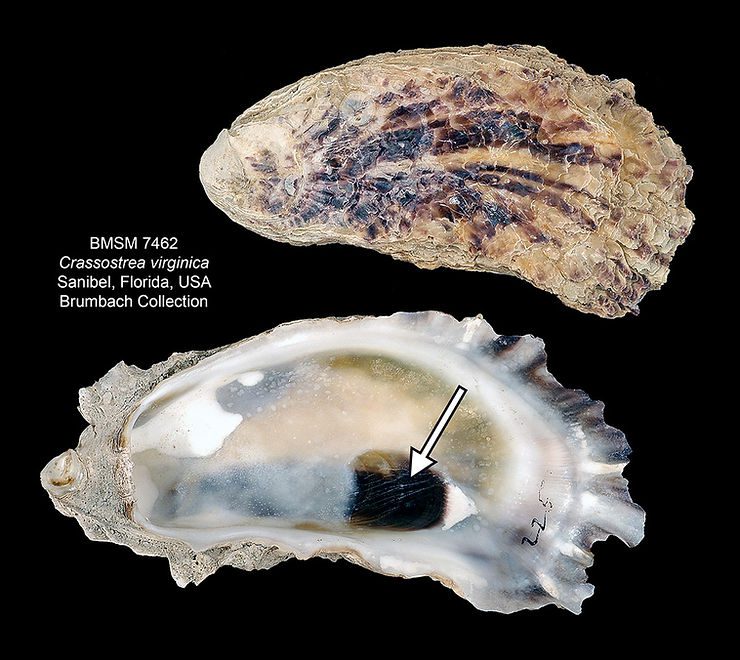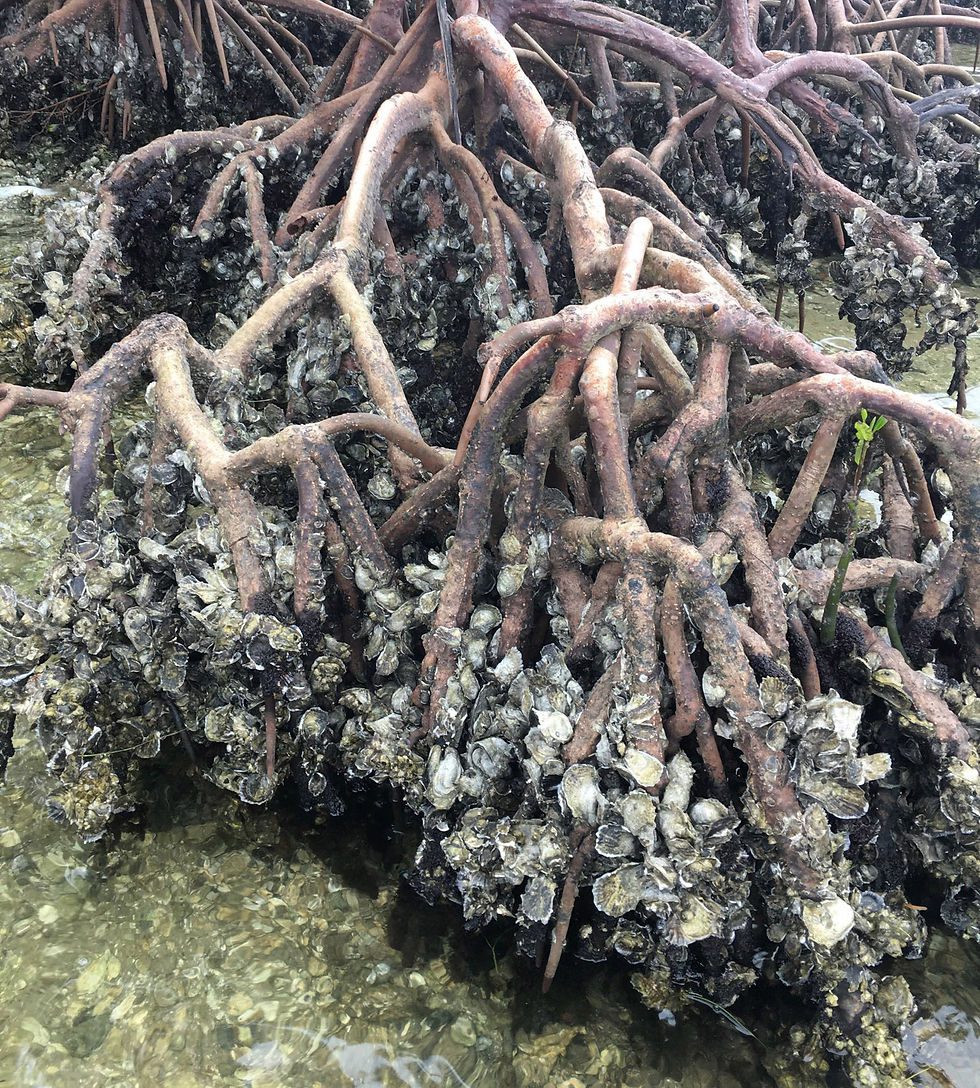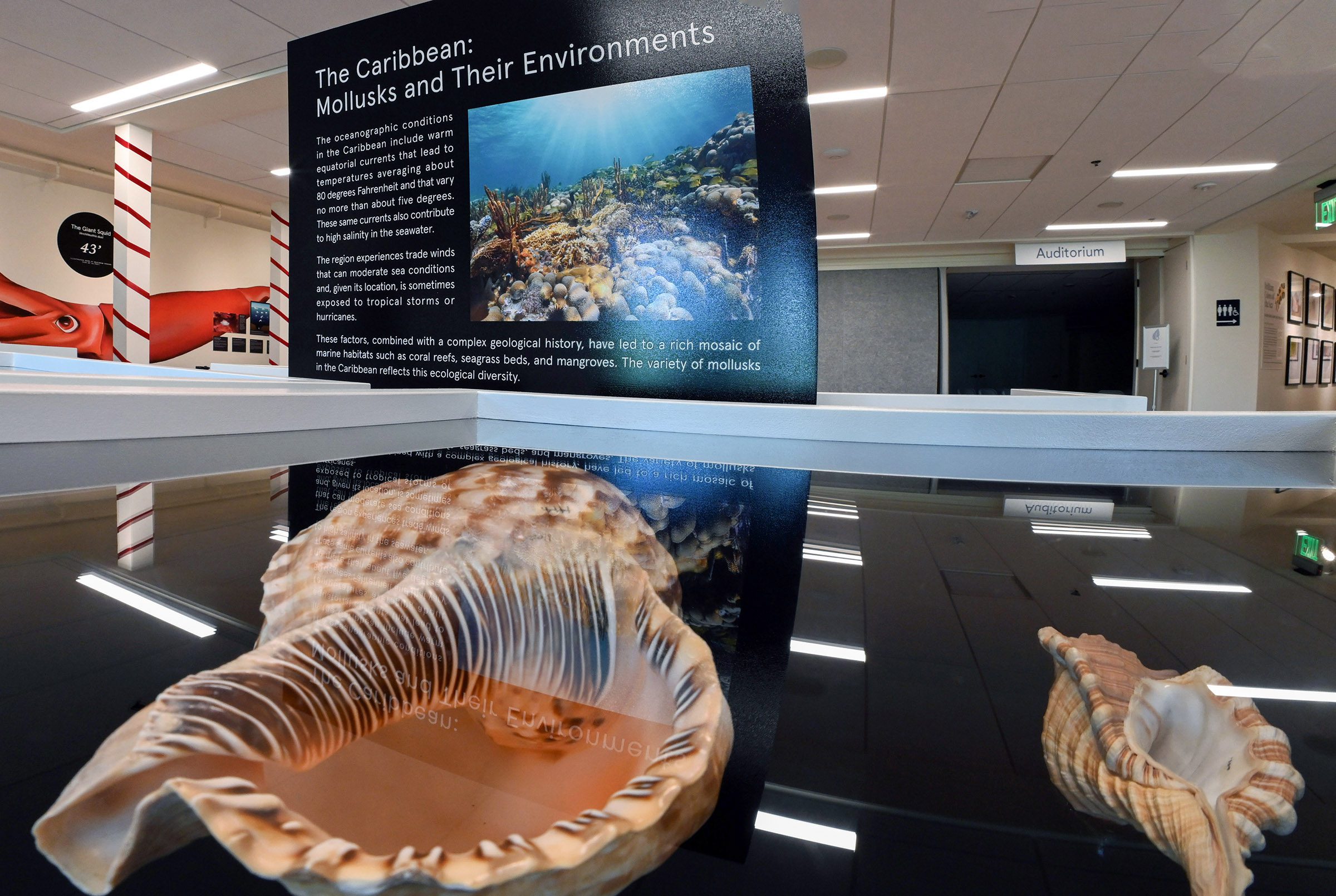If you look inside the valve (half-shell) of an Eastern Oyster, Crassostrea virginica, you’ll see a large, dark spot (arrows) “engraved” on each half-shell, or valve. That spot is known as a muscle scar, and marks the place where the adductor muscle of the living animal attaches to the inside of each valve.
 Eastern Oyster shell, from Blind Pass, Sanibel, Florida, 1961. Arrow points to muscle scar. Photo José H. Leal.
Eastern Oyster shell, from Blind Pass, Sanibel, Florida, 1961. Arrow points to muscle scar. Photo José H. Leal.
The adductor muscles are used by bivalves such as oysters and clams to close their shells, and to keep them closed for long periods of time. The adductor muscle in oysters is divided into a “quick muscle,” which acts quickly to clamp the oyster shut when the mollusk is threatened by a predator, and the “catch muscle,” which has endurance to keep the valves shut for longer periods of time, if need be. The dark pigment that tinges the muscle scar is a form of melanin. Data from a study* about the dark muscle scar of the Pacific Oyster, Magallana gigas, suggests that the pigment on the Eastern Oyster could safeguard the physical connection between the muscle and the shell valve from a form of detrimental, naturally occurring physiological deterioration. This would ultimately add fitness to the oyster, improving its chances for survival when faced with potential predators.
 Eastern Oysters on Red Mangrove tree roots. Gandy Bridge area of Tampa Bay, 2019. Photo José H. Leal.
Eastern Oysters on Red Mangrove tree roots. Gandy Bridge area of Tampa Bay, 2019. Photo José H. Leal.
In addition to its commercial value as a seafood item, the Eastern Oyster, Crassostrea virginica, is one of the most biologically important species of mollusks living along the Eastern Seaboard of the US. In protected bay waters, oysters form reefs that provide habitats, shelter, and food for dozens of species of marine organisms, from fish and other vertebrates to microorganisms. Oysters also help “clean” the water, by filtering particles from the water during their filter-feeding process.
Hao, S. et al. 2015. Extraction and Identification of the Pigment in the Adductor Muscle Scar of Pacific Oyster Crassostrea gigas. PLOS One 10(11):e0142439 DOI:10.1371/journal.pone.0142439
#crassostreavirginica #easternoyster #magallanagigas #pacificoyster #ostreidae #catchmuscle #quickmuscle #adductormuscle #bivalve


